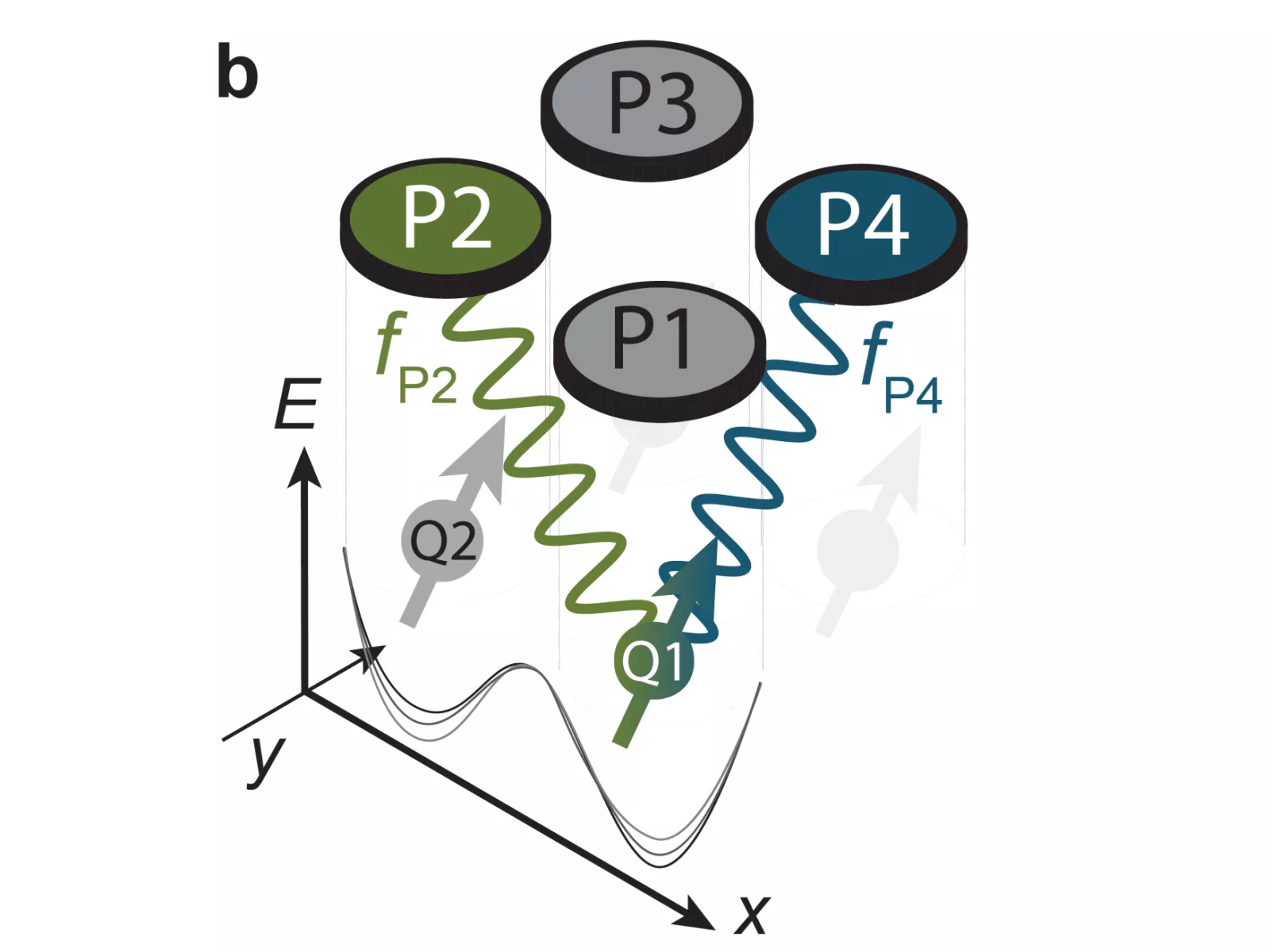
Research from a collaboration between TU Delft, ELTE and BME explores a new way to control semiconductor-based quantum bits. Published as Editors’ Suggestion in Physical Review Letters.
Most of today’s conventional computing technology is based on semiconductors. In contrast, the highest-valued quantum computing platforms are currently based on superconductors, or arrays of atoms levitated in vacuum. Quantum computer prototypes based on semiconductors do exist, but they lag behind their more advanced competitors.
Quantum logical gates are performed, in all of these platforms, by sending short pulses of electromagnetic radiation on the qubits. In neutral atom quantum computers, certain gates are done by `bichromatic transitions' (sometimes called `two-photon transitions'), which result from the interplay of radiation of two different frequencies. In the new paper, the researchers report the discovery and the detailed analysis of bichromatic coherent control of semiconductor-based single-electron qubits. Hungarian researchers (Zoltán György, András Pályi, Gábor Széchenyi) contributed to the results by the in-depth theoretical analysis explaining the experiments performed in the group of Menno Veldhorst at TU Delft. The authors expect that the new mechanism will be utilized for selective qubit addressing, and efficient parallelisation of logical operators, in large-scale two-dimensional qubit arrays.
This research was funded by the NKFIH via the Quantum Information National Laboratory of Hungary.
Valentin John, Francesco Borsoi, Zoltán György, Chien-An Wang, Gábor Széchenyi, Floor van Riggelen-Doelman, William I. L. Lawrie, Nico W. Hendrickx, Amir Sammak, Giordano Scappucci, András Pályi, and Menno Veldhorst
Bichromatic Rabi Control of Semiconductor Qubits
Phys. Rev. Lett. 132, 067001 – Published 8 February 2024
https://journals.aps.org/prl/abstract/10.1103/PhysRevLett.132.067001
https://journals.aps.org/prl/abstract/10.1103/PhysRevLett.132.067001